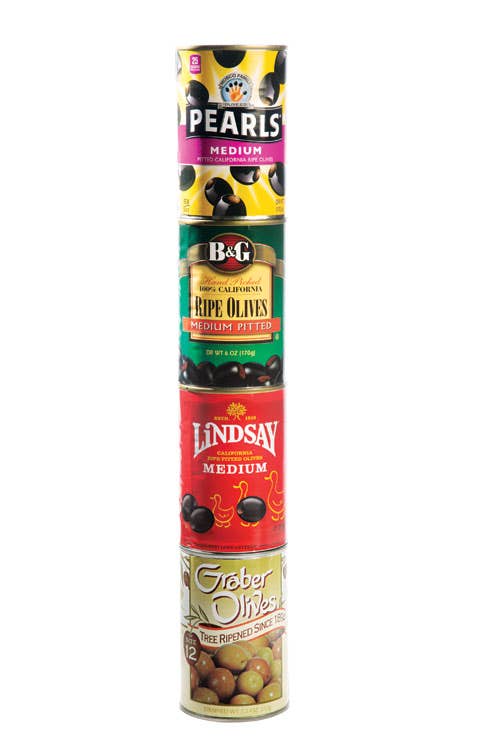
Uncanny Flavor
How quickly we forget. That's what we were thinking in the Saveur test kitchen after we popped open several cans of black olives to make the onion and olive enchiladas and the beef brisket and picadillo-stuffed empanadas for this month's feature on the foods of California's Central Coast (see "California Eternal,"). While we might often eschew the tinned staples in favor of kalamatas and other pungent types, black California olives are the ones many of us grew up with. Our mothers served them in the relish tray at holiday meals or chopped them up and layered them over cream cheese for our sandwiches. They're the olives we would place on our fingertips, then bite off, one at a time. We loved their meaty texture and mild flavor.
Those same qualities, as we learned this month, make canned California olives work better than more artisanal types when it comes to dishes like empanadas and enchiladas; their texture adds substance to those foods, and their mellow taste allows other ingredients' flavors to shine through.
Why are these olives so different from others? It has to do with the way they're processed. Most California olives are picked firm and green, then ripened in a lye cure that leaches out their bitterness. Then they're oxidized to a uniform blackness before they're canned. Of course, some California olives aren't so dark and mild. Long a staple of California kitchens, Graber-brand olives are fully tree-ripened before curing in sealed vats to prevent oxidization. Mottled reddish-gold in color, pit-in Grabers are more tender and nuttier-tasting than their ebony kin. And take our word for it, they're just as equally addictive.
Keep Reading
Continue to Next Story










